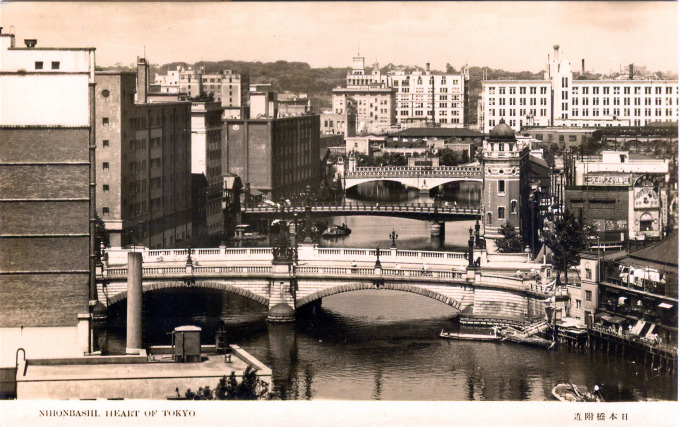
(Foreground-to-back) The Nihonbashi, Nishikashibashi and Ichikokubashi bridges, c. 1920, looking west along the Nihonbashi canal toward Otemachi and the Imperial Palace grounds, before the relocation of the fish markets to Tsukiji following the 1923 Great Kanto Earthquake. To the right of Nihonbashi is the Imperial Hemp Building, designed by Kingo Tatsuno and completed in 1911.
“Waterways crisscross Edo in all directions; north, south, east, and west; and there are bridges, too, in numbers beyond knowing. One great river joins the current of the moat in front of Ote gate and then flows through the city, southward to the ocean. Nihonbashi is just one of the spans crossing this river, and it is used by people going back and forth through the city.
“… When one looks at Nihonbashi, one sees long lines of people morning and night. Just as the city prospers, one hears the feet of people and horses beating like thunder upon the bridge.
“Of the 583 bridges in Tokyo in 1922, 69 were shaken down by earthquake shocks and 289 destroyed by fire [in the 1923 Kanto Earthquake].”
– Keicho kenmoshu, by Miura Joshin, as edited and published in Edo sosho, Vol. 2, 1980

